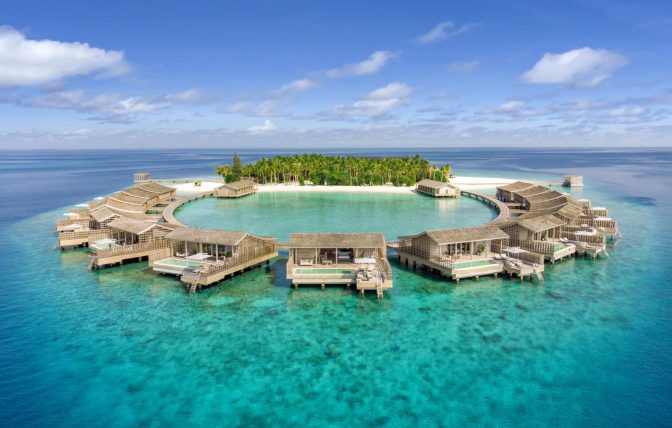

In the face of escalating environmental concerns, the tourism industry stands at a pivotal juncture, urgently seeking ways to mitigate its impact on the planet. In response to this challenge, adopting sustainable practices, particularly in architectural design, has emerged as a beacon of hope. This paradigm shift not only addresses environmental concerns but also enhances the allure of tourist destinations.
Green architecture, also known as sustainable design or green building, endeavours to minimise negative impacts on the environment by considering the entire life cycle of a structure, from its inception and construction to its ongoing operation and eventual demolition or reuse. Sustainability manifests in myriad forms, from innovative technologies such as smart technology and photovoltaic glass to circular economies, centralised power networks, and modular building techniques.
At its core, green architecture symbolises the fusion of aesthetic appeal and environmental consciousness, a harmony that resonates profoundly in the tourism industry. In an era where global travellers are increasingly mindful of the ecological toll of their journeys, the demand for eco-friendly and sustainable options is soaring. Within this context, green architecture emerges as a solution that satisfies the environmentally conscious traveller and rejuvenates the charm of tourist destinations.
Architecture transcends bricks and mortar; it shapes the essence of travellers’ experiences. Modern tourists seek more than just a cursory visit; they yearn for an immersive experience that aligns with their values. Herein lies the significance of green architecture. By integrating sustainable design principles, architects can create spaces that resonate with the eco-conscious traveller, nurturing a profound connection between the visitor and the destination. This shift from opulence to eco-conscious luxury marks a pivotal moment in the evolution of tourism.
Beyond its aesthetic appeal, green architecture is a guardian of the environment by reducing energy consumption, conserving water, and minimising ecological impact, thereby championing a sustainable future. Supported by compelling statistics and research findings, its environmental benefits are irrefutable, underscoring its pivotal role in reducing tourism’s environmental footprint. Additionally, the economic advantages of green architecture are substantial, serving as a tipping point for stakeholders. These benefits encompass reduced operational costs, increased revenue streams, and job creation. Real-life case studies illustrate green architecture’s tangible impact on tourist destinations’ economic viability, demonstrating that eco-conscious choices can be financially astute.
An exemplary instance of sustainable design is evidenced at Kudadoo Resort in the Maldives. Embracing environmental responsibility as a core value, Kudadoo exemplifies sustainability through solar power, sustainable building materials, and environmentally conscious activities. Situated in a delicate environment, the resort emphasises preserving nature and supports local communities. Kudadoo Resort is a pioneer of green architecture, showcasing the seamless coexistence of luxury and environmental consciousness, setting a global example for sustainable tourism practices.
Transitioning to green architecture is full of challenges; financial constraints and stakeholder resistance often pose significant hurdles. However, within these challenges lie opportunities for innovation and collaboration. Examining successful strategies and innovative approaches sheds light on how destinations can overcome these obstacles, fostering an environment conducive to the widespread adoption of sustainable architectural practices.
The landscape of green architecture is continually evolving, with emerging trends and innovations reshaping the industry. From integrating renewable energy sources to implementing innovative technologies and sustainable materials, the future of architectural design brims with possibilities. By embracing these trends, tourist destinations can redefine the visitor experience, offering a glimpse into a future where sustainability and luxury coexist, shaping a world where our architectural footprint treads lightly on the Earth.
In combining sustainable design and architectural innovation, we create a future where tourist spots shaped by green architecture stand as symbols of our dedication to preserving the Earth for future generations.